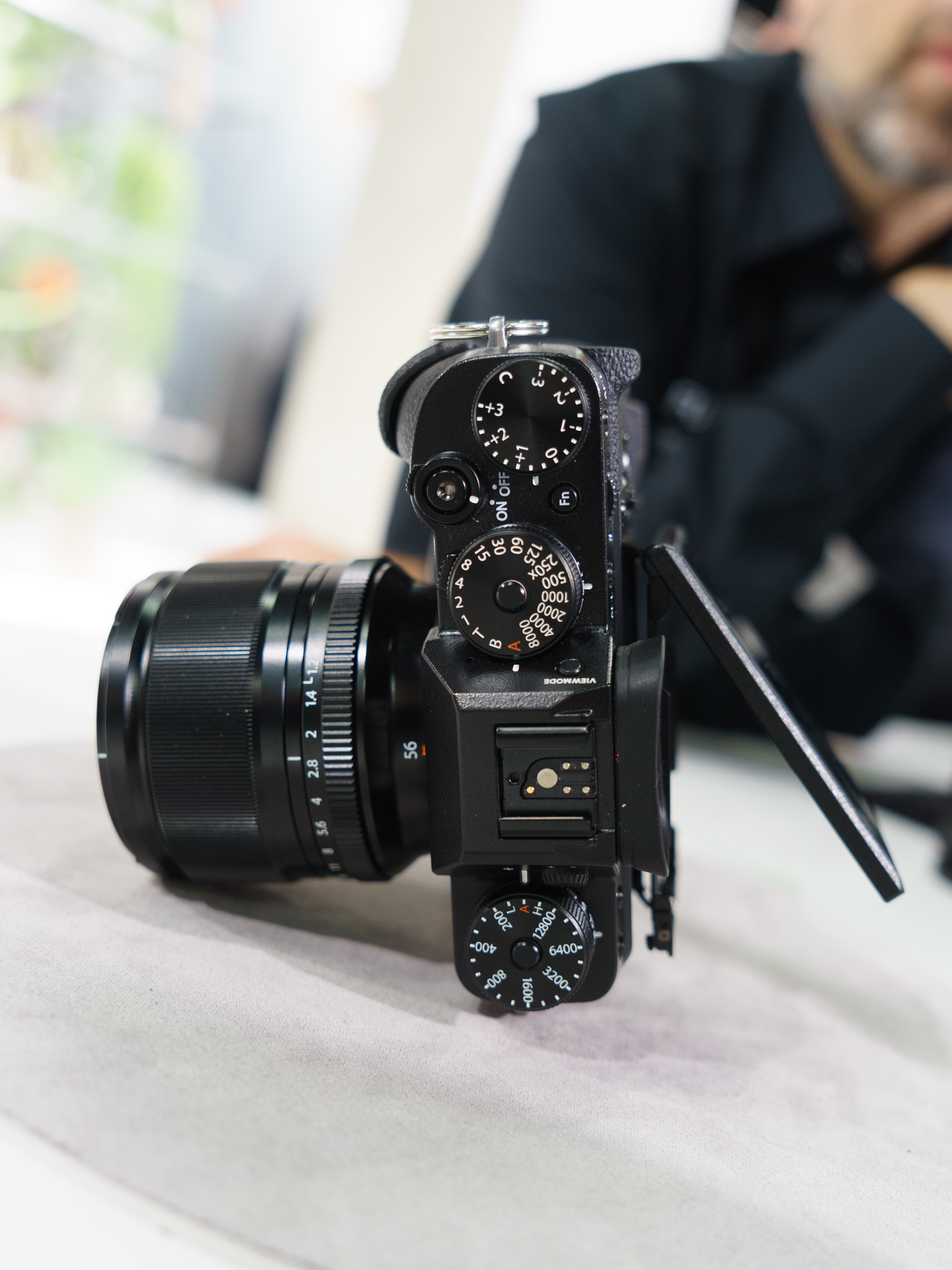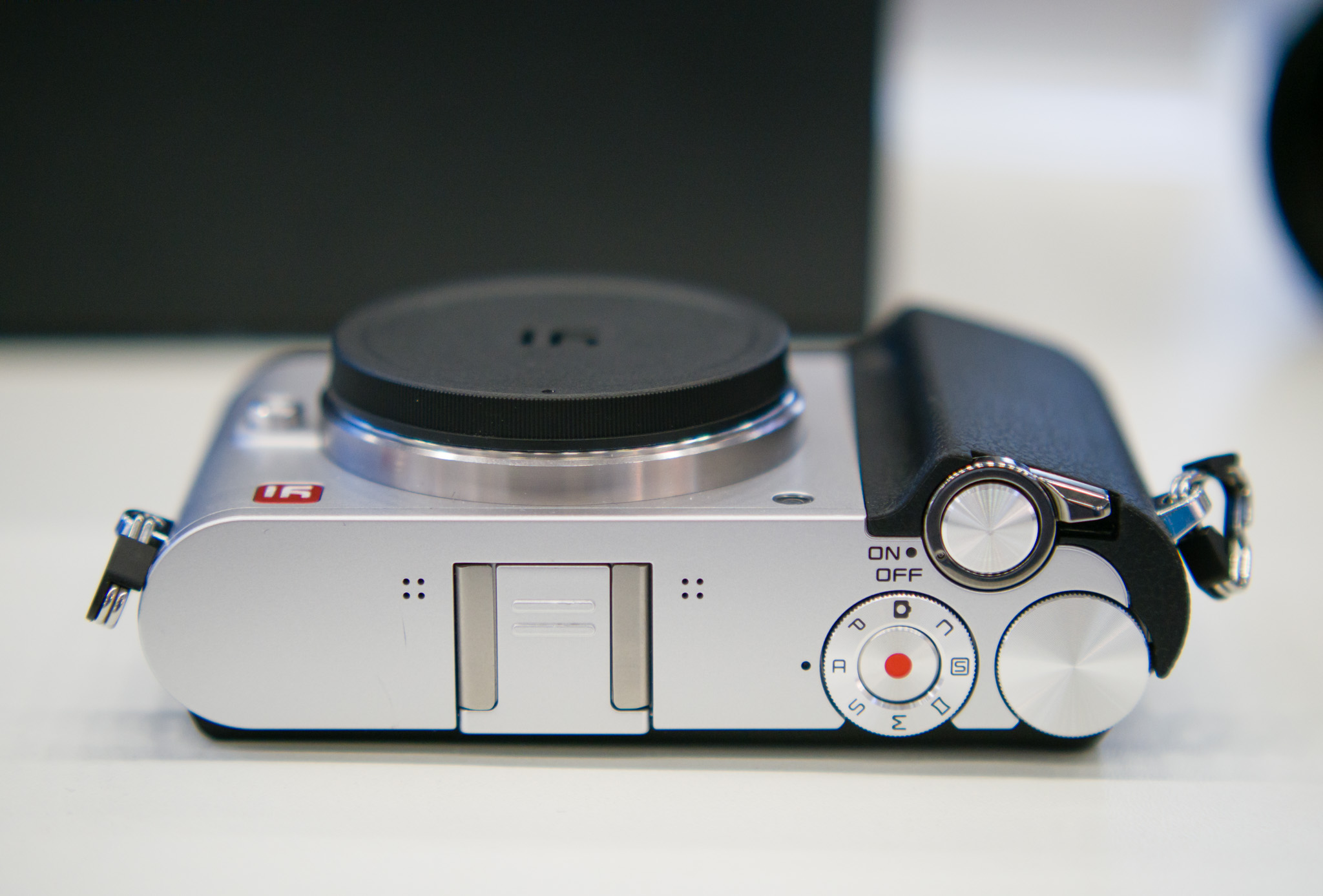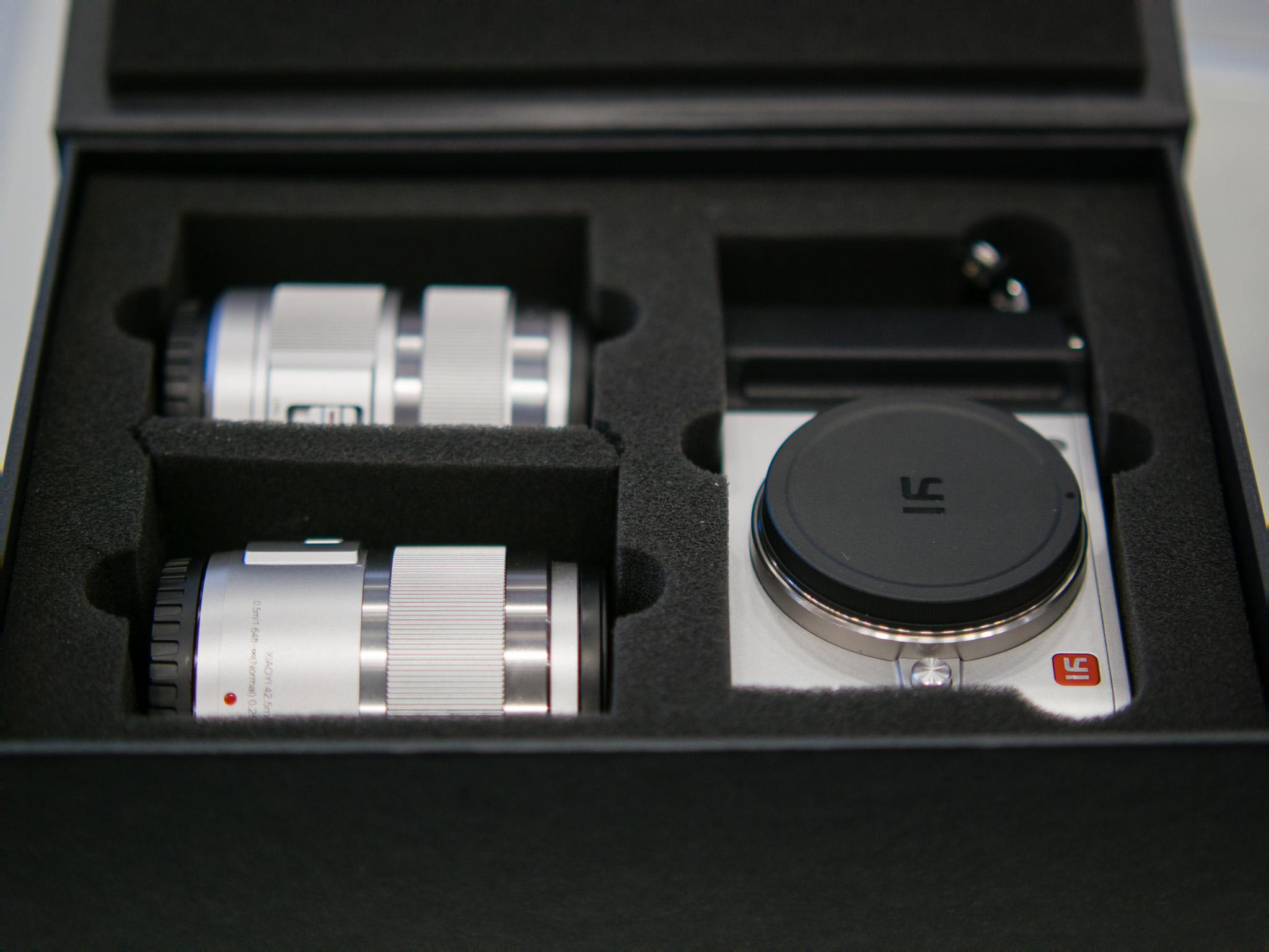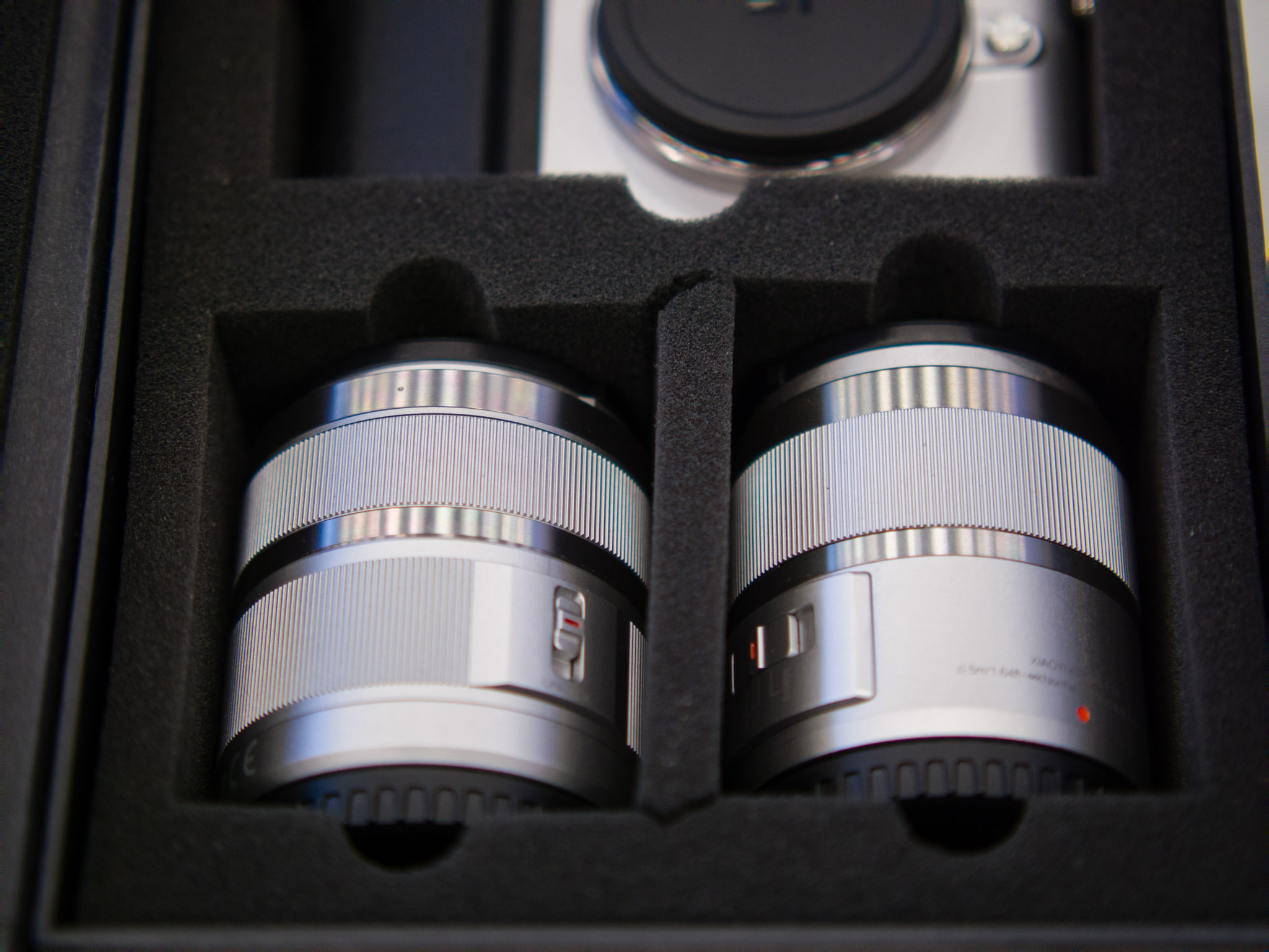Marius and I share some listener feedback before dissecting the elements of a photograph. We look at each ingredient and how they come together to make an image interesting, including a discussion of the role of post-processing.
Fuji has been pretty busy lately. The company made arguably the biggest splash at Photokina 2016 by announcing an entirely new Medium Format system, including the new GFX camera and an astonishing six lenses, to be released over the next few months.
The GFX was by far the most sought-after announcement at Photokina — after all, it’s not every day that you get to play with a 50-Megapixel Medium Format beast. Naturally, hands-on time was extremely limited, even more so considering the camera — yes, there was only one — is still a pre-production unit.
Unfortunately I didn’t manage to get my hands on the GFX, but for what it’s worth, it looks like an impressive system. It’s certainly bigger and bulkier than Hasselblad’s new X1D camera, but it remains roughly the same size as a Canon 5D-series body, which is a remarkable achievement. If Fuji’s price claims — well under $10k for the GFX body with one lens — end up being true, it will also be significantly more affordable than the rest of its Medium Format competitors, including the aforementioned X1D.
In fact, the GFX has the potential to be the camera that turns Medium Format digital photography into a feasible option for a wider range of professional photographers, not just those operating in extremely high-end, niche areas. It’s exciting.
However the situation plays out, Medium Format mirrorless systems appear to be here to stay. For now, both Hasselblad’s and Fujifilm’s offerings have their fair share of strengths and weaknesses, so we’ll see which one resonates more with prospective customers. The game is most definitely on.
♢
Now, Fuji may have captured the attention of many eyeballs at Photokina with the GFX, but the real star of their hands-on area was, of course, the recently announced X-T2. As the new flagship of Fuji’s widely acclaimed X-series system, the X-T2 fixes many of the shortcomings of the original X-T1 while staying true to its essence. I had a chance to shoot with it for a while, as well as to chat about it at length with Fujifilm employee Peter Fauland, and I have to say I came away very impressed. If you want to listen to my conversation with Peter, check out this special episode of Candid, which was recorded on location at Photokina. And now, let’s take a closer look at the camera.
Fujifilm employee Peter Fauland was kind enough to show me the new Fuji X-T2 and helped me test some of its new features.
Design and build quality
The Fuji X-T2’s body is a joy to hold and use. It looks very similar to the X-T1’s, but it has improved ergonomics and controls. The grip is slightly more recessed now, making it more comfortable with longer lenses, and there’s a switch on the top of the ISO and mode dials that locks/unlocks their position with a single click, instead of having to keep pressure on the switch as you rotate the dial.
The new body also has a clever tilting screen that can be tilted in both landscape and portrait orientations. This allows you to compose overhead or ground-level shots with ease, and is more flexible than your typical tilting screen. It doesn’t have a selfie mode, though, which may limit the camera’s appeal as a video-blogging tool. Not that it matters much, though; the X-T2’s certainly appears to have set more ambitious goals for itself.
Finally, there’s now dual SD card slots, so you can always have a backup of your pictures at the ready. No more losing pictures because of a faulty card. This is such a no-brainer feature that I can’t understand why some manufacturers — ahem, Sony — haven’t implemented it yet.
None of these differences are profound, or game-changing, but they didn’t need to be. The X-T1 was already an excellent body, and subtle improvements like these will make using the X-T2 even better.
Image quality and performance
The X-T2’s 24-megapixel X-Trans III sensor delivers stunning image quality, much like what we saw in the X-Pro 2 earlier in the year. Dynamic range is great for an APS-C sensor, and the RAW files are quite malleable in post-production. The extra resolution over the 16-MP X-T1 is very welcome, and should eliminate any concerns about using Fuji’s X-Series system as a serious work tool. You can definitely print big with this camera, and you should be covered for most types of commercial work: weddings, product photography, fashion… The X-T2 can do it all. As high-resolution sensors become mainstream it’s becoming clear that you don’t need a Medium Format or even a Full Frame camera to pull off these types of jobs anymore.
Of course, all of Fuji’s film simulation modes are built into the X-T2, including the stunning Acros. And with the dual SD card slots, you can configure the camera to write JPEGs to one card while writing RAW files to the other. Now there’s no excuse not to make use of the gorgeous JPEGs Fuji cameras are known for.
I played with these at Photokina for a while, and it’s tons of fun. The Provia profile worked wonders for people shots, even in lighting conditions as challenging as an indoor hall with a variety of different light sources, each of which had its very own color temperature. The camera did a great job setting the white balance, and the images came out looking rich, detailed, and with just the right amount of contrast. It wasn’t perfect — some isolated shots had a clear yellow cast — but overall, it was impressive.
For reference, here’s a few image samples I shot with the X-T2 at Photokina. All of these were shot as JPEGs and have only been cropped and resized. No further edits were applied.
The camera usually does a great job of setting the white balance, but it may fail in challenging lighting conditions. Notice the obvious yellow cast in the image above.
As far as performance goes, the X-T2 is a two-part story. First there’s the body, which is capable of shooting at up to 8 fps with full AF capabilities. That’s not bad at all, but things get even more interesting when you attach the X-T2’s power boosting grip.
The grip doesn’t just extend battery life into DSLR territory — Fuji claims up to 1,000 shots on a single charge — but it also improves performance significantly. With it, the burst rate goes up to 11 fps and the refresh rate of the EVF goes up to 100 fps, up from an already very good 60 fps. This will not only help you track your subjects more accurately; it will also eliminate any flickering due to artificial lights, which dramatically improves usability indoors.
Another new feature in the X-T2 is the improved autofocus system, especially when it comes to subject tracking in C-AF. Fuji’s latest flagship has 5 different AF modes that allow you to fine-tune tracking behavior under several different circumstances, plus a sixth user-customizable mode. To make it easier to know which mode to use, each one is represented by a sample image in the menu. You can, for example, configure the camera to keep tracking the initial subject and ignore any obstacles. You can also tell it to look for accelerating/decelerating subjects. You can tell it to look for suddenly appearing subjects — which has a very descriptive picture of a skier jumping into the frame — or you can tell it to look for all kinds of erratic movements, a mode that Peter very aptly described as “total chaos”. The picture for that one is, fittingly, a tennis player during a match.
As far as I could tell during my brief testing, each of the new modes definitely changes the way the camera tracks motion, so this new AF system isn’t just a gimmick. The problem is, there’s a bit of a learning curve here, and it’s not always easy to know which mode is best suited to the task at hand despite the descriptive images. It took Peter and I over 15 minutes to get acceptable results in our two very simple test setups: sliding a water bottle in and out of view at moderate speed, with smooth left-to-right and back-to-front movements. We did get a fair amount of out of focus shots initially, but once we managed to find the appropriate mode for each case, tracking worked great. I would also expect the system to work better with people, especially faces. After all, a water bottle isn’t exactly the most exciting subject to track.
The point here is that the new AF tracking modes are a clear improvement, and they should bring the X-T2 to the front of the mirrorless pack when it comes to fast action shooting. They should also make it at least competitive with DSLRs, although to be fair, there’s still a bit of a gap here. It’s getting closer and closer with each new mirrorless generation, but for now, if shooting sports or similarly fast-paced action is your bread and butter, a high-end crop DSLR still looks like the best tool for the job. For those of us with more modest needs — just about everyone outside of professional sports shooters — the X-T2 should be more than enough to get the job done.
There’s also much to love about the X-T2 for video enthusiasts. The camera can now shoot 4K footage internally, and there are some great Fuji color profiles available for video, too. This has the potential to substantially reduce the amount of post-processing needed, and in fact most people will be able to get usable footage straight out of the camera. The X-T2 also has a new F-Log profile that greatly enhances dynamic range and that should makes color grading a lot easier. All in all, this is a solid offering, especially considering previous Fuji cameras have never been that great at video.
Overall, the X-T2 is an absolute powerhouse of a camera. In fact, the only omission I can think of is in-body image stabilization, something Fuji isn’t too keen on anyway. Fuji believes lens-based image stabilization to be a superior technology, and they’re sticking to it. Meanwhile, every other player in the industry is moving in the opposite direction, so we’ll see how this plays out in the end. For now, this doesn’t take much away from the X-T2 in practice; if their lens-based stabilization technology is good enough — and it is — then this is more of an academic debate than a practical one.
Parting thoughts
With the release of the X-T2, the Fuji X-Series system now represents everything I love about photography: great design, manageable size and weight, fantastic usability, awesome image quality, and a plethora of superb lenses to choose from. More importantly, it is a system designed by and for photographers, something that is easily noticeable upon spending just a few minutes with it.
It tempts me more than anything else out there.
As much as I love my Sony camera and my lenses, there’s just something missing there. They don’t feel like creative tools, more like exceptional technical instruments. They lack character, something Fuji cameras seem to have in spades.
Had I not committed to the Full Frame Sony system, picking up an X-T2 would be so easy. In fact, in some deep recess of my mind, I can see a version of myself that sells every piece of Sony kit he owns and puts the money towards the X-T2, the 16-55mm f/2.8 zoom, and the trio of 23mm f/2, 35mm f/2 and 56mm f/1.2 primes. He looks damn happy, and he would probably even come out ahead in terms of money. That version of myself haunts me every day.
But I guess commitments wouldn’t be called that if they were easy to make. Part of staying with a system for the long haul is learning to let go of passing temptations to switch. I still think the Sony E-mount system offers greater potential, and I hope it will be realized in the near future. A new Sony camera — be it the A7 III or the long-rumored A9 — with improved ergonomics and performance and dual SD card slots would go a long way towards easing my mind.
In the meantime, though, I can’t help but keep looking at the X-T2 and wonder… what if?
Candid, Episode #32: Unfamiliar Bedfellows →
After a quick recap of our Photokina reactions, we talk about Sony’s new a6500 camera, as well as Marius’ new PEN pal. We also examine how Fuji and Olympus are gaining confidence in their products, the threat of mobile technology, and how well the Fuji X-T2’s C-AF tracking works.
I’ve just updated my guide to the best Full Frame E-mount lenses to account for the state of the system as of October 2016, including the — admittedly few — announcements we saw at Photokina.
Now, this guide isn’t and was never meant to be a comprehensive list of every FE lens in existence. Only the very best lenses, those that can be considered great long-term investments, are featured. As a result, only one new lens makes the cut in this update: the Zeiss Loxia 85mm f/2.4 Sonnar T*.
Last week at Photokina, there was one announcement that surprised pretty much everyone. Chinese company Yi Technology — the camera branch of smartphone manufacturer Xiaomi — just became a new Micro Four Thirds player by announcing the Yi M1, a small camera with clean lines and a minimalist design, a classic look very reminiscent of Leica cameras.
The Yi M1 comes in your choice of silver — Ice Silver, actually — or Storm Black. Let’s just get it out of the way: yes, it looks a lot like the Leica T. And no, that doesn’t bother me one bit. After all, if you’re going to be “inspired” by someone else’s design, Leica is definitely not a bad role model to choose.
Build quality and features
The Yi M1 has plenty of substance to go with its looks, though. It packs a 20-megapixel Sony sensor inside, similar to the ones found in the Olympus PEN-F and the Panasonic GX8, so resolution and dynamic range should be in the same ballpark as what you get with those cameras.
The camera is able to record 1080p video at 60 fps, but also 4K video at 30 fps, which will be great news for those looking for a competent video-blogging camera that won’t break the bank.
On the ergonomics front, the Yi M1 is very light, weighing only 280 g. The grip is comfortable enough if you’re shooting with small lenses, but if I were to mount heavier glass on it I’d definitely want to have something a bit more substantial.
The Yi M1 also has a nice touchscreen that responds very well to touch, and the menus seem very clear and intuitive to use. Just swipe right to bring up the menu, then swipe up or down to navigate through the different pages to access your desired option. I really like how this was implemented.
You can change which parameter is operated by the control dial just by tapping one of the options displayed on the screen.
The camera only has one physical control dial — besides the main mode dial and the ON/OFF switch — but switching from aperture to shutter speed control only takes a single tap on the rear LCD, so I’m calling this an acceptable compromise. The dial itself feels surprisingly well, as do the rest of the buttons on the camera — all two of them. Of course, the body is still mostly made out of plastic, although the lens mount is made of metal. There’s no electronic viewfinder or built-in flash, but the camera does have a hotshoe, so perhaps those will be added down the road as external accessories.
All in all, this is a decently made camera with basic dedicated hardware controls, which is understandable in this category.
Where the Yi M1 hopes to differentiate itself from the pack, however, is with the connectivity features. The camera has Bluetooth Low Energy and WiFi, and there’s a dedicated smartphone companion app — available on both Android and iOS — that will make it very easy to share pictures to your social network or cloud service of choice. I didn’t have a chance to test this feature, but according to two Yi representatives, the company is betting heavily on it to be one of the camera’s main selling points.
For what it’s worth, the current smartphone camera companion app is not exactly brimming with excellent choices, so if they manage to nail this aspect, I could definitely see it becoming popular.
Speaking of social sharing, there’s another feature in the Yi M1 that strikes me as extremely clever. They’re calling it Master Guide, and it’s basically a collection of compositional guidelines to help you get tried-and-true portrait poses of your subjects. If you’re lacking some inspiration but still want to get nicely posed shots, this will come in super handy. Check out this video to see how the feature works. Brilliant!
The Master Guide feature is an extremely clever idea, and one I would like to see other manufacturers adopt.
Pricing and availability
The other main selling point, of course, will be price. The Yi M1 will be released in the US on October 12, and it will start at $499 with a lens, which is a terrific value for the amount of technology that you get. Besides, being a Micro Four Thirds camera, the Yi M1 will be compatible with the entire MFT lens catalog from both Olympus and Panasonic, as well as third party manufacturers like Sigma and Voigtlander. This is one of the perks of entering a fully mature system: you don’t need to develop everything yourself from scratch. Smart move.
That being said, Yi also announced two new lenses of their own: a typical 12-40mm f/3.5-5.6 zoom lens, and a more interesting 42.5mm f/1.8 Macro lens. Both lenses are mostly made out of plastic and are very light and compact. What is surprising, though, is that the camera will also be available in a very nice kit with both lenses for $699, which is still a pretty good value, except I don’t really see the point in owning the kit zoom. I’d much prefer to get the kit with just the prime lens for $599, but maybe that’s just me.
Performance and image quality
Now, I know what you’re thinking: All that’s well and good, but how’s the image quality? Where are those images samples you mentioned in the title?
Glad you asked. Actually, all images in this article were taken with the Yi M1 and the 42.5mm prime, so feel free to inspect them as much as you want. For a bit of context, these were shot at the Yi stand in Photokina under artificial light — and not very much of it, at that. They should provide for an interesting real-world example of the kind of performance you should expect from this camera.
Of course, these are somewhat edited and heavily compressed JPEGs for the web, so if you want to play with the RAW files yourself, I’ve also uploaded a few of them to Dropbox. I can’t promise they’ll stay up indefinitely so if you’re interested, be sure to grab them while they’re hot. And speaking of the files, the camera uses the standard Adobe DNG file format, so it is already supported by pretty much every photo-editing app out there, including Lightroom.
Low-light performance seems to be right in line with the other MFT cameras that use this 20-megapixel sensor: images are clean at up to ISO 3,200, but they are still quite usable at ISO 6,400. The extra resolution means you can trade some of that detail for a bit more aggressive noise reduction and still come out ahead in terms of image quality. Shadow recovery also seemed perfectly adequate, and the files take sharpening very well.
I did notice that the camera’s built-in light meter had a strong tendency to underexpose, and I regularly needed to boost exposure in post production, in some cases by as much as 1.2 stops. This may have been due to the challenging lighting conditions, though, so I wouldn’t consider it a problem just yet. And you can always use the exposure compensation feature anyway, so once you figure out the bias, it’s not a big deal.
AF performance was a bit on the slow side. The camera didn’t hunt for focus very much, but it was just slow. Now, I only got to test the camera with the two Yi-made lenses so performance may be better with, say, Olympus primes, which are some of the fastest-focusing lenses for the system. Again, the poor lighting conditions made it difficult for me to test this feature extensively, so I can’t speak for the camera’s AF performance in better conditions.
What was most surprising to me is the fact that the camera doesn’t support manual focusing at all. The focusing ring on both lenses is merely cosmetic, which is just surreal. It’s unclear at this point if this is a firmware or hardware limitation — meaning, MF might work with other lenses — but in its current state it is just silly.
As for the lenses, I didn’t shoot much with the zoom lens, but I have to say I was pleasantly surprised by the 42.5mm lens. It is very sharp and chromatic aberration is reasonably well controlled — there are traces of it here and there, but at this price point we certainly can’t complain. Normally I wouldn’t even look at this lens because the excellent Olympus 45mm f/1.8 prime is one of my favorite lenses, but the Yi prime has a neat trick up its sleeve that has me questioning my love for the Oly: the macro mode.
Flicking a switch on the lens barrel, you get to take macro pictures, which adds a whole new dimension to the lens and greatly expands its shooting capabilities. Unfortunately, the aperture goes down to f/3.5 when you’re shooting in macro mode, but that’s a small price to pay for the feature.
A darn good first impression
I must admit that when I first heard of the Yi M1, I didn’t give it much credit. It just felt like a cheap attempt at copying the Leica T.
However, after playing with it for a while, it strikes me as a very compelling first-entry into the Micro Four Thirds arena. It’s not weather-sealed, it feels plasticky, and it doesn’t focus very fast, but all those things don’t matter when you look at the pictures you can take with it.
This camera packs some serious punch, and it shouldn’t be underestimated. The entry level to the Micro Four Thirds system just got a heck of a lot better, and both Olympus and Panasonic will have to raise the bar accordingly. Imagine what this company could do two or three years from now, once they’ve had time to iron out the kinks, if they decide to pursue the higher end of the market.
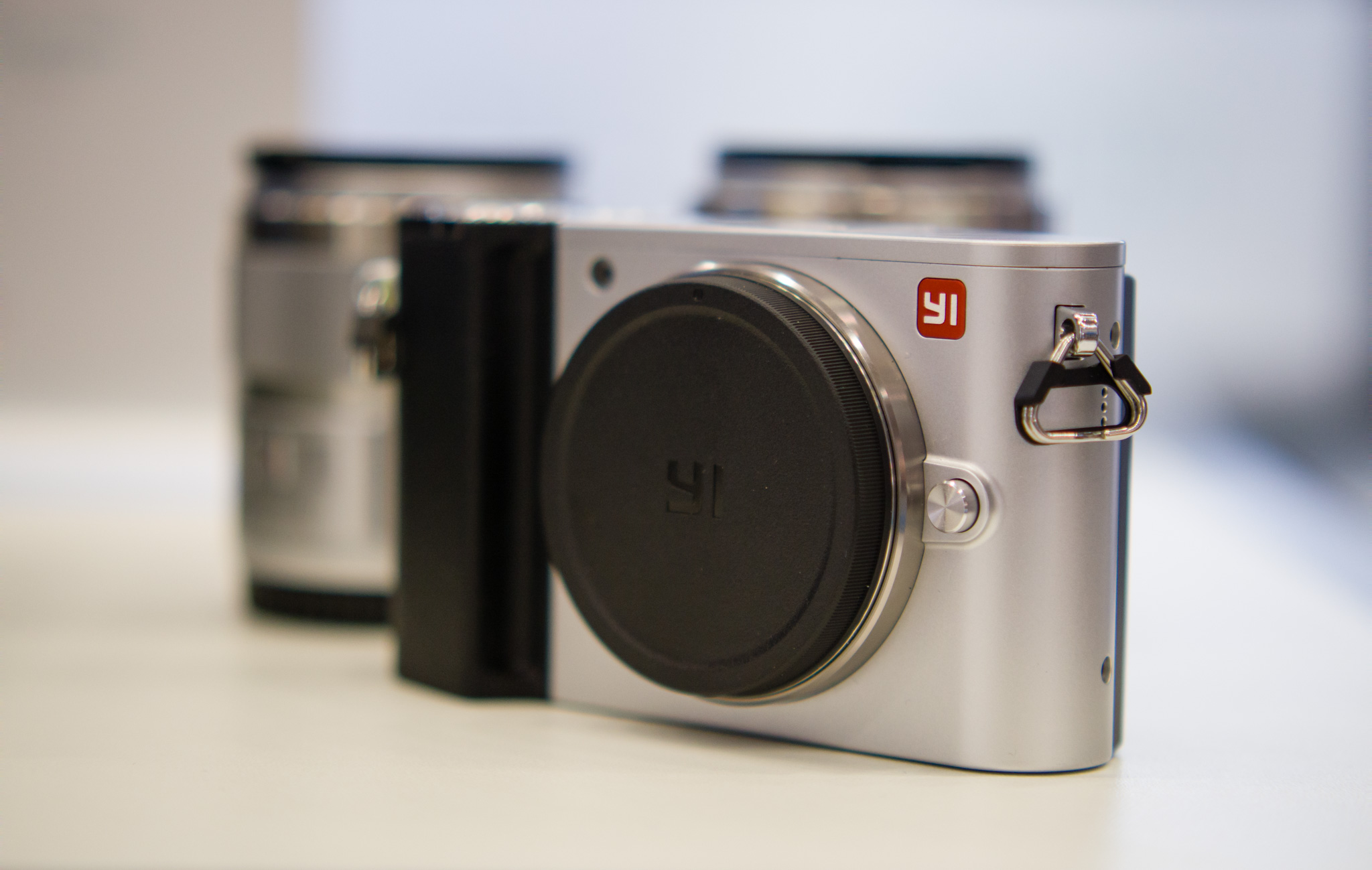
During my visit to their stand, one of the Yi representatives I spoke with noticed my Sony a7 II camera, then looked me in the eye very seriously and said: “your camera is for work. Our camera is for life”. They just may be onto something here.
GoPro announced the new HERO5 Black and HERO5 Session action cameras a few days ago, and they also unveiled the Karma, a really cool drone to go with them. I spent some time playing with the new toys at their Photokina stand the other day, so head on over to Tools & Toys to see what they bring to the table.
Candid at Photokina - Part 4: Odds & Ends →
Our final Photokina episode is packed full of everything else at the show—Canon products, more thoughts on Olympus, and a ton of hands-on lens impressions from the show floor. We also choose the recipients of the official Candid Awards for Biggest Splash, Most Improved Company, and Biggest Disappointment. Can you guess which companies won?
Candid at Photokina - Part 3: Fuji →
The third episode in our Photokina week coverage includes our first impressions of Fuji’s announcements, including a brand new medium format system, my hands-on impressions of the X-T2, and two very special interviews!
Yesterday I stopped by the Manfrotto stand at Photokina and I spent a while playing with their PIXI and PIXI Evo lines of mini-tripods. These are incredibly clever and useful devices to have with you, and they will definitely earn a place in your bag. Head on over to Tools & Toys for more information.
Candid at Photokina - Part 2: Micro Four Thirds →
Our second Photokina coverage episode is all about Micro Four Thirds, featuring the Panasonic GH5, Olympus E-M1 Mark II, new lenses, and more!









